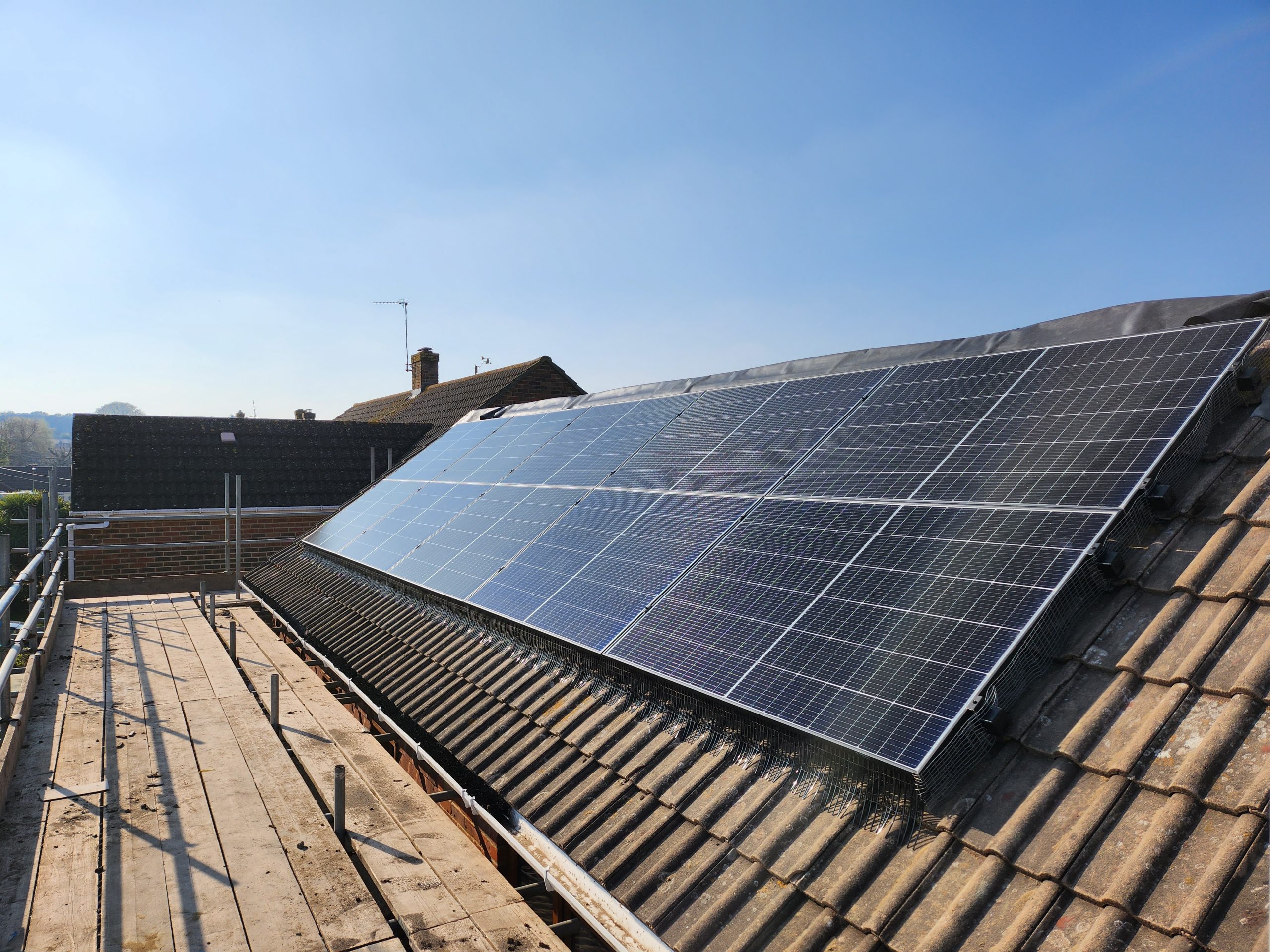Solar
Solar
Solar? Can I have it? In the majority of cases, the answer is yes! It doesn’t matter whether you live in a house, bungalow or a farm…both sloping and flat roofs are viable options for solar panel installations.
Solar installed by experts.
In the majority of cases, the answer is yes! It doesn’t matter whether you live in a house, bungalow or a farm,…both sloping and flat roofs are viable options for solar panel installations. The only time this can become an issue is if you live in an area of outstanding natural beauty or a listed property, but we can advise you and take you through the process. There are occasions where additional planning may be needed, such as high rise flats and near to roadsides as well. Some simple information you can gather yourself are: - Does my roof get a lot of sunlight - Which way does your roof face? North, East, South or West? - Do I want to sell energy back to the Grid or have a storage battery and store what energy I don't use? If you have answered yes to any of these questions, you are halfway there! Contact us today and a member of our team will be to send you an initial free design survey on your house and its potentially saving forecast. Following our initial survey, if this is something you are happy to proceed with, we will then arrange a site survey to your property and check the finer details. Read on to find out aspects of solar PV installation and further explanation of what's required and will take place during your installation.


Key Questions and Considerations
A quick way to do this is to use google maps. Type in your postcode and look at which way is true south! A south-facing roof is ideal for a roof to face/ideal orientation for a solar panel system because it tends to generate the most electricity from the solar panels, receiving the sun at its most powerful for the longest time, south-facing roof panels generate the most energy. However, this does not rule out the possibility of installing solar panels on rooftops with an east or west orientation. East and west-facing rooftops are also acceptable for solar panel installation and will still generate a significant amount of electricity throughout the day. We will check the location of your property and what type of roof you have.
Solar PV systems can still generate power if there are objects causing shade; however, the amount of electricity generated will be greatly diminished. If your roof has lots of shadows cast upon it for extended periods of time. Depending on the location and scale of the potential shading, it may be advisable to have an optimised system that can mitigate the effects of shading on your roof. Sometimes it is necessary to install systems with optimisers as these help regulate panels which are affected by shading. Optimisers are also required if you have panels on two different parts of your roof. e,g, oneside faces east and the other west.
It doesn’t matter whether you live in a house, bungalow, farm,…both sloping and flat roofs are viable options for solar panel installation, a consideration is how the slope of your roof (or lack thereof) will affect any solar panel yield. The ideal roof pitch angle is between 30-40°, but even if the angle of your roof falls outside of this range, it is still possible for a PV system to generate clean electricity effectively. A PV system mounted on a flat roof will be done at an ideal angle of inclination of 15° and, due to the additional logistics involved, may require planning permission. You could also consider a garage, extension or shed installation.
The following items are included in the standard package:
Solar PV system
Installation
Scaffolding up to two stories in height
Everything from cabling to mounting materials
Inverter
In-home monitoring
Guarantees and warranties
Roof survey
You will be informed of any unique circumstances that may need the payment of additional fees based on your personal recommendation.
After the roof survey is completed, Lumia will confirm the precise amount of additional expenses.
Although there is no commitment to accept this recommendation, you will be supplied with additional information to schedule your roof survey.
Read more about a solar PV installation.
Most installations can be completed in two days. Scaffolding will be put up and taken down several days before and after the installation. If the installation is likely to take longer than this, we will let you know beforehand.
Inverter
The inverter is typically installed in a well ventilated and coll place and as near the main panel array. Inverters are more efficient if kept in a cooler place. A garage or a utility room are usually the best places since they stay cool for most of the year and have ventilation.
Power diverter
If you have an immersion heater you may want to use some excess solar energy to heat water in a storage tank for example? There are a number of products on the market that are very straightforward to install and low maintenance. These are usually placed on a wall and connect the inverter to the power supplier. They manage the flow of surplus electricity by diverting it directly into your immersion heater, making the most of the electricity generated by your solar PV system.
Battery storage
We offer both DC and AC coupled batteries for already installed solar systems. These are typically installed inside. Although we don’t recommend fitting them in lofts. Their physical size increases with their storage capacity.
Self-consumption is about using as much of the electricity your panels generate as possible.
There are a range of actions you can take to make sure that as little solar energy as possible ends up being sent to the grid. To maximise self-consumption, you can:
- Set up timers to run devices and appliances during the day
- Get a power diverter to power your immersion heater
- Install an Energy Management System (EMS)
The Feed-in Tariff (FiT) was the Government scheme through which people or businesses who generated electricity from renewables were paid for the energy they used and exported to the grid. The scheme closed to new applications on 31st March 2019.
A replacement for this is the Smart Export Guarantee (SEG). Suppliers with more than 150,000 domestic customers have to offer at least one SEG tariff. They would also set the price they would pay for each kilowatt-hour (kWh) of electricity bought. Not all energy suppliers currently provide these, but more are likely to follow.
If you decide not to take battery storage you could still benefit from your excess energy by exporting to the grid and getting paid by energy suppliers through an export tariff.
Find out more on our SEG & export tariffs online or with your energy provider.
